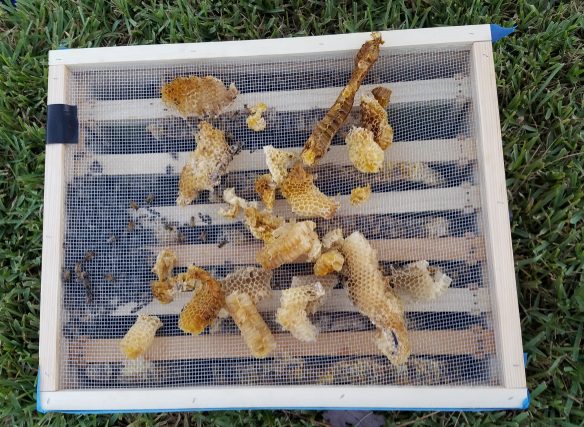We had to destroy our lone hive. This was the hive that had been going like crazy and racking up a ton of honey. The one that survived the longest out of any of our hives, and was obtained for free from an infested owl box. I had been having increasing aggression problems with them. It was slowly building as the colony got larger. I haven’t been able to mow the back yard in a month because they would attack, and then stay mad for hours later. It was to the point that we couldn’t risk someone else getting hurt.
I will spare all the gory details of how we did it. Needless to say our backyard was a horror show, I have been stung nearly 30 times, and we are both drained from the ordeal.
We did manage to harvest about 30 pounds of honey. The spinner worked well again. Newspaper on the floor really helped keep it from being a slippery mess. The only major harvesting issue we had was that our electric hot knife died before we even got started. This was only the third time we ever tried to use it.
Sore, swollen from stings and sad at the loss of another hive.













































